It is more Japanese than sushi, and it is the everyday go-to dish for schoolchildren and workers alike. But this triangular rice ball is not standing still, it continues to develop. Sometimes in unexpected ways, but always in keeping with tradition. Read on to find out more.

From Simple Rice Balls to National Icon
Walking around Tokyo, you will see not just the standard compliment of restaurants, but also small stands wedged between yakiniku shops and ramen stores. They typically sell onigiri, sometimes known by the name of omusubi (nigiri, the same as in nigiri-zushi, means the rice has been squeezed into shape; musubi refers to it being wrapped in a sheet of nori).
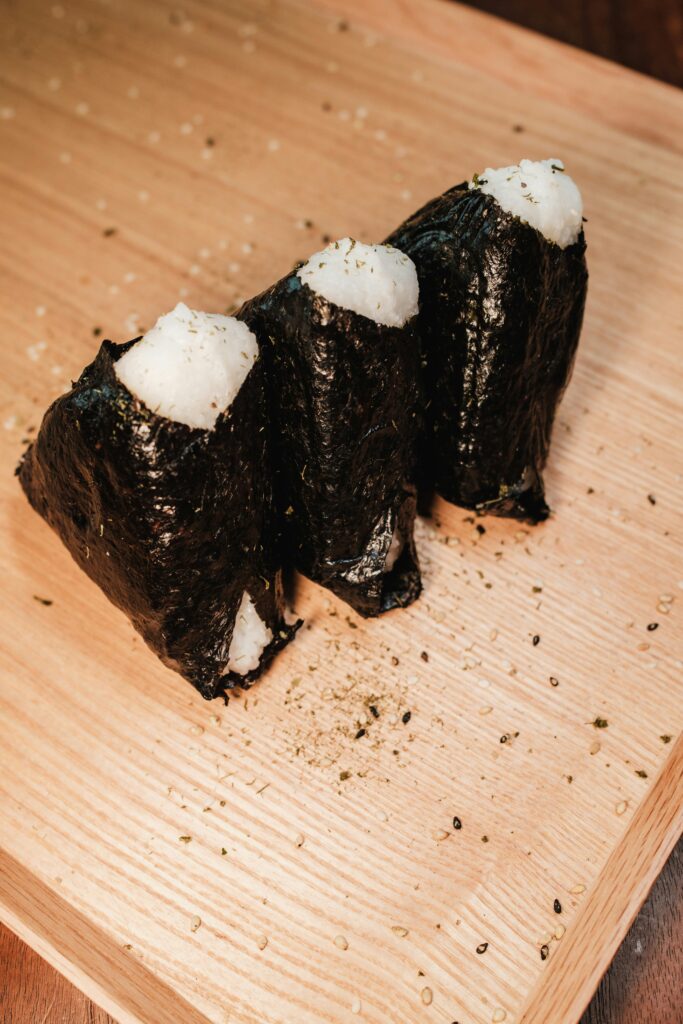
The Japanese have been eating onigiri for at least 1500 years, and even though the concept has been the same, the form has changed considerably. The original onigiri was simply a ball of rice with some salt to make it keep. Soon enough, vinegar was added to make sure its shelf life was even further extended. Next, the fillings appeared, sometimes during the European Middle Ages. And in the 17th century, nori wrapping was added.
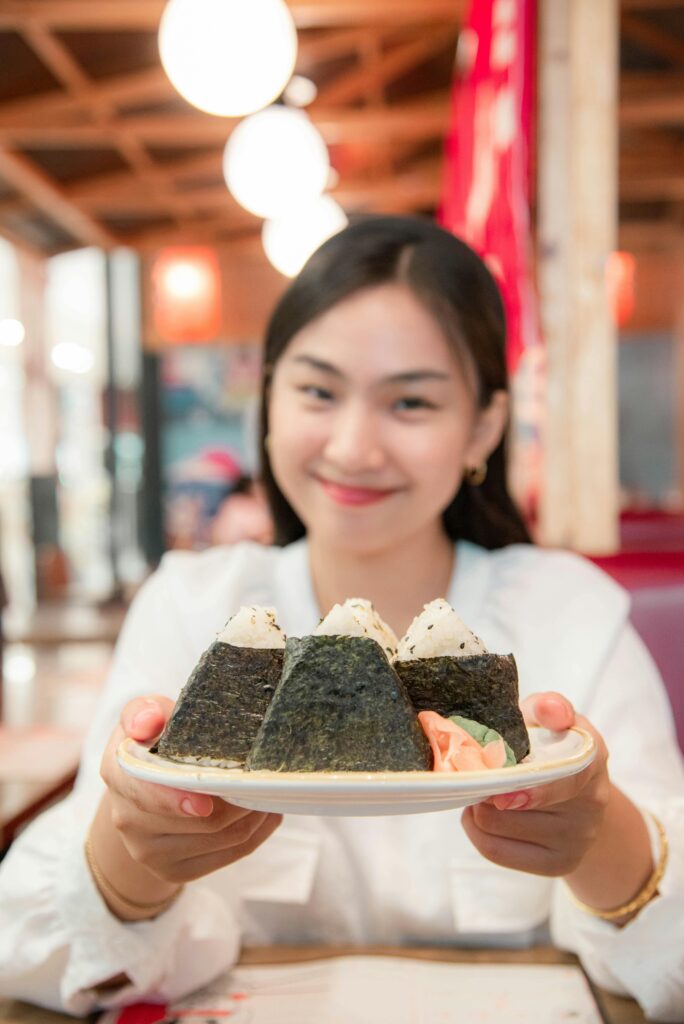
The onigiri remained the same for about three hundred years, until the introduction of plastic. Previously, the nori (the green sheet made from pressed algae) was applied directly to the rice; this is still how they do it in the really fancy onigiri shops, where each omusubi is lovingly crafted before your eyes. In the convenience stores, however, where onigiri is a staple on the lunch shelf, the rice ball (usually made in a nearby factory the same morning) is wrapped in a plastic sheet.
No more soggy nori for rice balls
The longer you leave the ball wrapped in nori, the soggier the nori gets. After a full day on the shelf, it will not be particularly appetizing.
The plastic sheet keeping the nori and rice apart is a marvel of Japanese engineering, but if you want a real challenge, try a sushi roll from the same shelf in the convenience store. There are some tricks to opening it without spilling out the rice, but if you follow instructions (the folds are numbered so you know in which order they should be opened), then you will end up with a perfect roll full of tasty filling and wrapped in crispy nori. The Japanese, always great at onomatopoeia, say “zaku-zaku.”
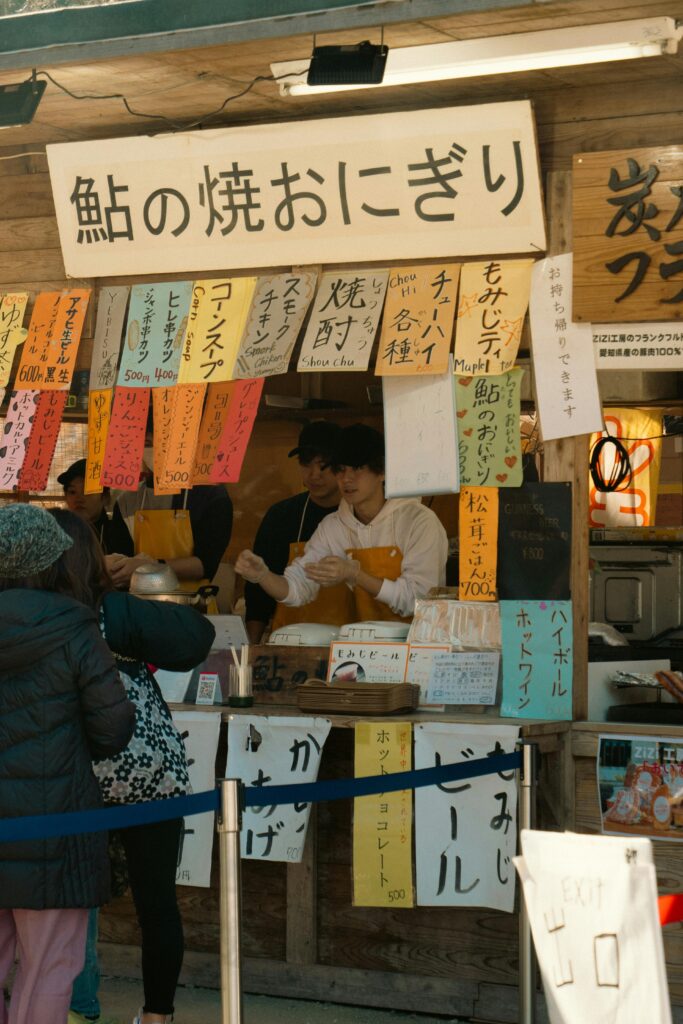
Buying an onigiri – in the convenience store or in a specialized onigiri store – to have as lunch or a snack is a perfect way of getting a solid meal without disrupting your workday. If you are busy, it is easy to eat at your desk; if you have time to go to the coffee corner, it can be eaten as a takeout lunch. The dedicated onigiri stores, which serve a little bit fancier and more traditional onigiri than the convenience stores, tend not to be open until mid-morning, however. And they usually close after lunch. But the difference in quality against the convenience store offering is remarkable.
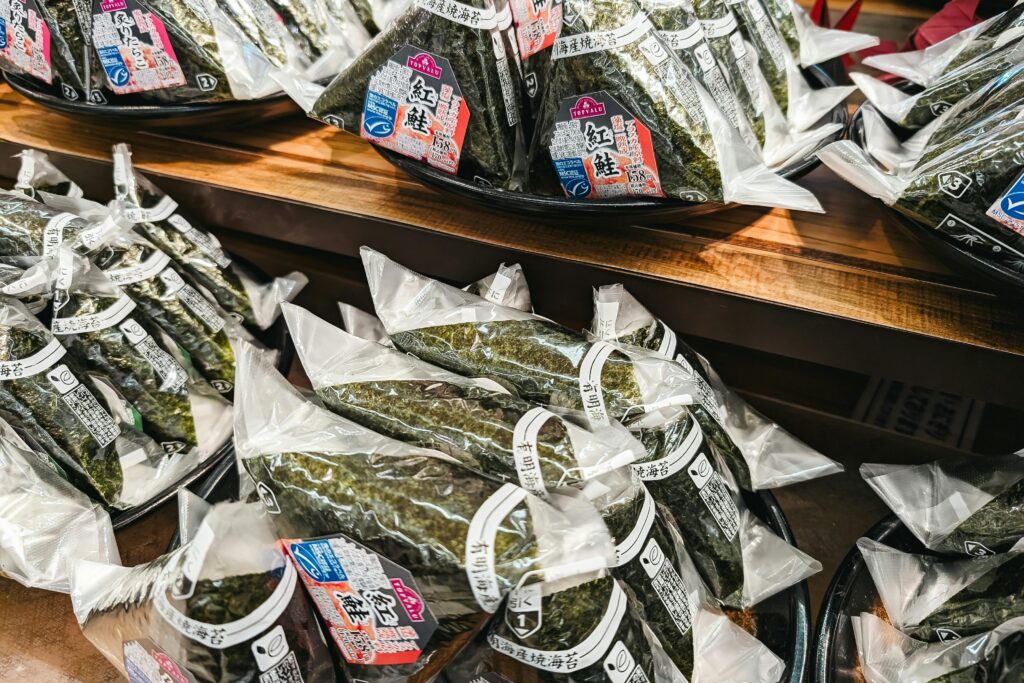
Of course, the ingredients matter — and when they onigiri specialty stores select their ingredients, they go out of their way to make it perfect. Start with the rice. Since there is a rice crisis in Japan, and domestically produced rice has become outrageously expensive, many rice users (restaurants in particular) have shifted to imported rice. Growing “Japonica” rice, which is the kind used in Japanese cuisine, was already an established industry in Vietnam and Thailand.
Rice Imports does not help
When the Japanese rice price went up, so did imports. But it was still not enough to sate the glut, so unfortunately, prices went up too.
No rice, no onigiri, even if there have been inventive stores which have tried to sell other kinds of “onigiri”, containing bread, corn, or whatever. But that does not fly, especially not with the most traditional manufacturers. And their customers. An onigiri is made with rice, period.
That does not mean nothing but rice. Oseki-gohan, made with beans boiled in the rice, and gomuki-gohan, where different kinds of vegetables are boiled in the rice, are both popular versions that, of course, contain slightly less rice due to the use of vegetables.
A traditional onigiri — with rice, wrapped in nori, and with a filling which can be many things, is still not all that expensive. The high-end stores try to keep the price below 500 yen, but the convenience stores have raised their prices, and are touching 150 yen for a cheap onigiri. Inflation is slowly hitting Japan.
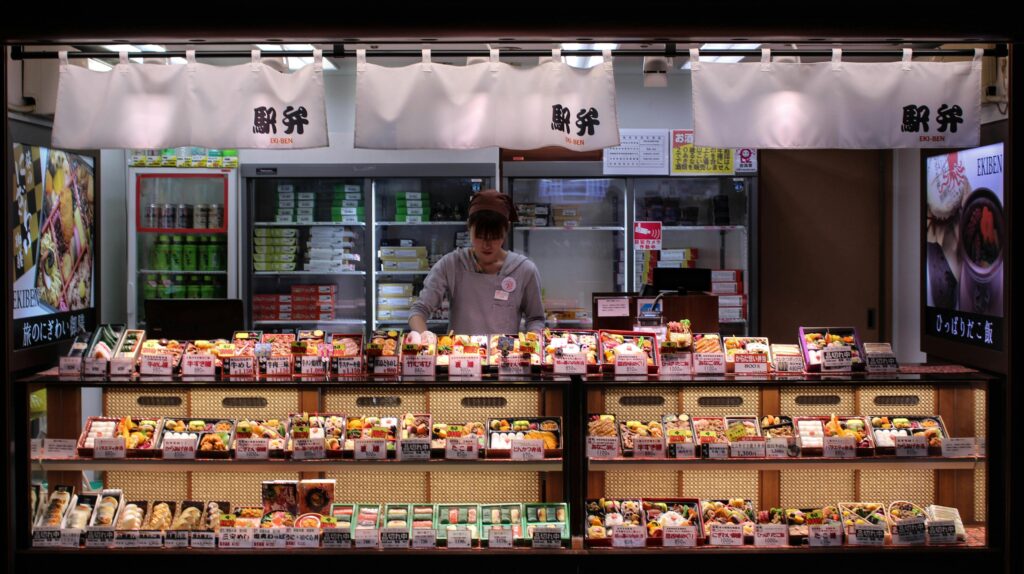
It will be quite a while until we see a thousand-yen onigiri, though. Unless you leave the regular (and cheap) fillings and go for something like gold flecked wasabi leaves. But that is not a normal onigiri. Normal onigiri have fillings of umeboshi, tuna, okaka (fish flakes soaked in soy sauce), or even tempura shrimp (a popular way of showing off that you have an expensive lunch even though you are eating onigiri, since the tail sticks out). Apart from umeboshi, shake (salted salmon) is probably the most popular.
Stick to the old onigiri recipes
The traditional onigiri stores stick to their recipe — after all, if it worked for Genji in the 8th century, why should it not work now? The convenience stores, meanwhile, push for innovation daily. It is here you will find the kimchi onigiri, the spam onigiri (very similar to the spam omusubi in Okinawa, although for some reason they taste much better there). When they change their product lineup, typically in March and October, you are bound to see some new onigiri lining the shelves. Some stay, like the egg onigiri (with half a soft-boiled egg inside) or the omurice onigiri (with ketchup rice and a slice of omelet on top).

Occasionally, you will see onigiri wrapped in something else than nori. Omurice onigiri are a thing, with the rice wrapped in an omelet, of course. And there are onigiri, which come in a brownish wrapping, marinated and chewy; that is tofu, and the onigiri are inari-zushi onigiri. And sometimes the wrapping is grey and mottled. That is shaved konbu, a kind of algae that now only grows around Hokkaido. You need to shave thin sheets off it to be able to eat it, as the thick seaweed (in itself a popular onigiri filling) is tough to eat unless you slice it thin.
Compare the traditional store offering with the onigiri from the convenience stores, if you have the chance. The traditional onigiri are gourmet fare in comparison to what you will find in the convenience stores. But that quality comes at a price. Although it is usually worth it.
Stay tuned for more exciting content like this! Follow us on our social media platforms and check out our blog regularly to stay updated on the latest news, trends, and insider stories from Japan. Don’t miss out on future updates — sign up for our newsletter for exclusive content delivered straight to your inbox!



